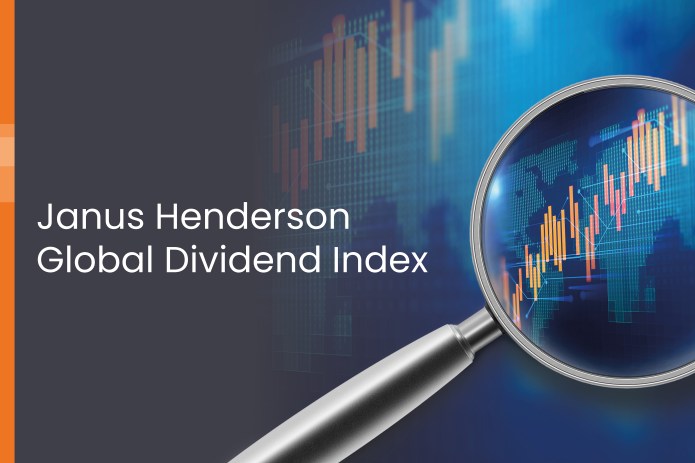Global dividends surge to a new record in Q2
Global payouts rose 5.8% on a headline basis in the second quarter of 2024 to an all-time record of US$606.1 billion.

30 minute read
Key takeaways:
- Globally, 92% of companies raised dividends or held them steady in Q2. Moreover, one third of sectors saw double-digit underlying growth and only three sectors saw dividends fall.
- In Europe, the US$204.6 billion total marked an all-time record for the region as payouts jumped 7.7% year on year. France, Italy, Switzerland, and Spain all saw record dividends. In the US, dividends rose 8.6%; two fifths of this growth was due to Meta and Alphabet paying their first dividends.
- Banks once again were the most important driver of higher payouts, accounting for one third of the underlying increase year-on-year.
The Janus Henderson Global Dividend Index (JHGDI) is a quarterly, long-term study into global dividend trends. The index measures the progress global firms are making in paying their investors an income on their capital.
Global income investors enjoyed a very strong second quarter of 2024. Payouts rose 5.8% on a headline basis to an all-time record of US$606.1 billion, according to the latest Janus Henderson Global Dividend Index report. Underlying growth was even stronger at 8.2% once the drag caused by exchange rates, especially the weak Japanese yen, was taken into account.
Banks were the key driver of Q2 dividend growth
Banks once again were the most important driver of higher payouts, accounting for one third of the underlying increase year-on-year. European banks were the main contributors, but the trend was evident globally. Insurers, vehicle manufacturers (especially in Japan) and telecoms were also important contributors to growth in Q2.
Headline vs. underlying
Special dividends of US$13.3 billion were only a little larger in Q2 than in the same period in 2023; this gave a modest boost to the headline growth rate. The largest single payout came from HSBC, following the sale of its Canadian operation – at US$4 billion, it comprised almost a third of the total. Hermes was also a significant contributor.
This modest boost was more than offset by exchange rates, which held back the headline growth rate by 1.5 percentage points in Q2. More than half of this effect came from Japan, where the yen fell sharply against the US dollar. Europe made up most of the rest.
2024 Forecast
After a strong second quarter, and to allow for the strong contribution dividend newcomers will make this year, we are upgrading our forecast for 2024’s dividends. We now expect companies around the world to distribute US$1.74 trillion, up 6.4% compared to 2023 on an underlying basis (up from 5.0% at the time of our last report) and equivalent to a headline increase of 4.7% (up from 3.9%).
Andrew Jones, Portfolio Manager on the Global Equity Income Team, said:
“We had optimistic expectations for the second quarter, and the picture was even brighter than we predicted. Around the world, economies have generally borne the burden of higher interest rates well. Inflation has slowed while economic growth has been stronger than anticipated, and companies have proved resilient and in most industries continue to invest for future growth.
After a strong second quarter, and to allow for the strong contribution dividend newcomers will make this year, we are upgrading our forecast for 2024’s dividends.”
Unless otherwise stated, all data is sourced by Janus Henderson Investors as of 30 June 2024. Nothing in this document should be construed as advice.
These are the views of the author at the time of publication and may differ from the views of other individuals/teams at Janus Henderson Investors. References made to individual securities do not constitute a recommendation to buy, sell or hold any security, investment strategy or market sector, and should not be assumed to be profitable. Janus Henderson Investors, its affiliated advisor, or its employees, may have a position in the securities mentioned.
Past performance does not predict future returns. The value of an investment and the income from it can fall as well as rise and you may not get back the amount originally invested.
The information in this article does not qualify as an investment recommendation.
There is no guarantee that past trends will continue, or forecasts will be realised.
Marketing Communication.